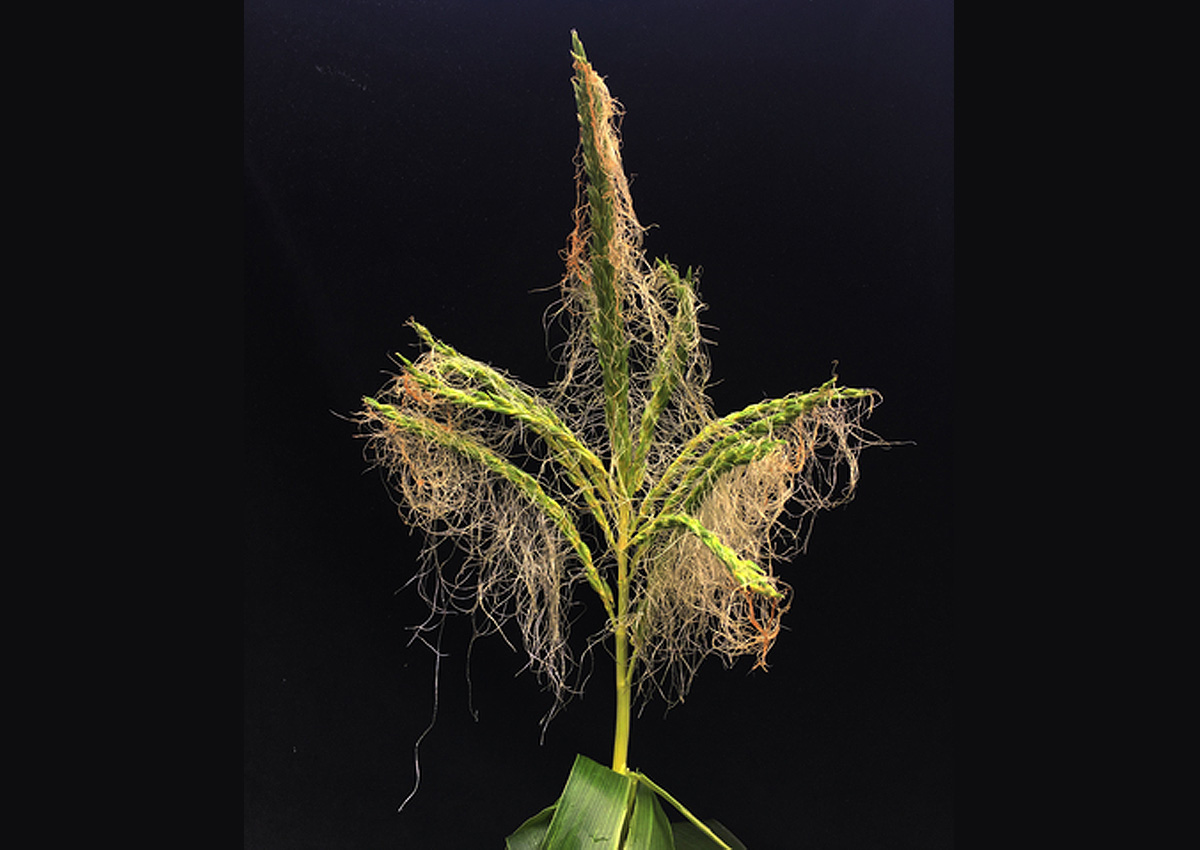
UMass Amherst Researchers Identify Genes for Flower Formation
February 2, 2022| |
Researchers at the University of Massachusetts Amherst have discovered the genetic linkages governing flower formation, solving a long-standing mystery of the many different types of flowers in the world and shedding light into a dark corner of evolution.
The process called "programmed cell death" has long been known as partly responsible for flowers' morphological diversity. Programmed cell death is a genetic mechanism that eliminates some cells on purpose and it is at work in the carpels of flowers, or the seed-bearing structures at the heart of the flower. One gene, in particular, known as GRASSY TILLERS1 (GT1), influences carpel growth suppression in maize. However, it is not the only gene regulating the process, and until now, no one has been able to identify others that interact with GT1 to suppress maize carpels.
Focusing on maize flowers, the team designed an innovative experiment to identify other genes regulating carpel suppression with GT1. They used a technique known as "forward genetics," which is a way of working backward from a known flower formation. The team discovered that another gene, RAMOSA3 (RA3), also plays a vital role in maize carpel programmed cell death. RA3 was previously thought to play a role only in the way that plants branch, but RA3 turns out to be pleiotropic, meaning that it influences more than one trait.
For more details, read the article on UMass Amherst website.
| |
You might also like:
- Flowering Mechanism in Brassica rapa Leafy Vegetables Now Revealed
- Researchers Identify Cells that Trigger Flowering
- Researchers Uncover 'Switch' that Triggers Plant Flowering
Biotech Updates is a weekly newsletter of ISAAA, a not-for-profit organization. It is distributed for free to over 22,000 subscribers worldwide to inform them about the key developments in biosciences, especially in biotechnology. Your support will help us in our mission to feed the world with knowledge. You can help by donating as little as $10.
-
See more articles:
-
News from Around the World
- IITA Scientists Identify Markers Associated with Resistance to Banana Weevil
- African Experts Underscore Importance of Youth Participation in Access and Benefit-sharing of Genetic Resources Negotiations
- US Backs Biotech Potato Research for Asia, Africa
- UMass Amherst Researchers Identify Genes for Flower Formation
- University of Florida Scientists One Step Closer Toward Crops That Make Own Nitrogen
- Argentina Updates its Regulatory Policies on Environmental Risk Assessment
- Australia's OGTR Releases Report on Herbicide Tolerance Review
- Researchers Use Wild Relatives to Breed Eggplants with New and Improved Traits
-
Research Highlights
- Transgenic Common Bean Lines Show Multiple Resistance to Three Viruses
-
Plant
- Report Explores Future Applications of Genomic Science
- Researchers Propose Framework for Classifying GMOs and Genome-edited Organisms
- Scientists Develop Shorter Canola to Minimize Lodging
-
Read the latest: - Biotech Updates (November 26, 2025)
- Gene Editing Supplement (November 26, 2025)
- Gene Drive Supplement (February 22, 2023)
-
Subscribe to BU: - Share
- Tweet

